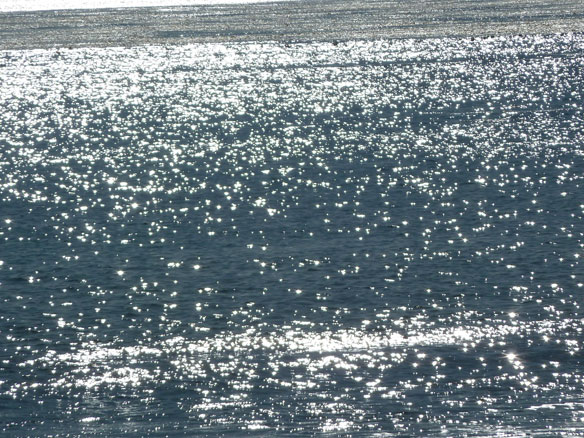
Photograph: © SAF — Coastal Care
By © Woods Hole Oceanographic Institution;
Four years after the Fukushima Dai-ichi nuclear power plant accident, Japan is still recovering and rebuilding from the disaster. In March 2011 one of the largest earthquakes ever recorded shook Japan, creating a devastating tsunami and damaging the Fukushima Dai-ichi nuclear power plant. The accident resulted in the largest unintentional release of radioactivity into the ocean in history.
On the fourth anniversary of the disaster, Woods Hole Oceanographic Institution (WHOI) and the Long Beach, CA-based Aquarium of the Pacific will debut a new program about ocean radioactivity motivated by the Fukushima nuclear accident. The program will be projected daily in the Aquarium’s Ocean Science Center on the National Oceanic and Atmospheric Administration’s (NOAA) Science on a Sphere® and will be made available to more than 100 institutions around the world through NOAA’s SOS Network with a capacity to reach over 50 million combined visitors.
“We wanted to provide some background in this show, on the sources of radioactivity in the oceans prior to, and now across the Pacific, after Fukushima. That perspective is important as we live in a radioactive world, with many sources of both naturally occurring and man-made radioactive materials,” said Dr. Ken Buesseler, senior scientist at WHOI who has been studying ocean radioactivity for more than 30 years and lead scientist on the collaborative museum project. “So the important question is not whether the oceans already contain radioactive materials – they do – but how much more radioactivity did Fukushima add to the ocean.”
Today, residents of the West Coast of the United States are particularly concerned about radiation from Fukushima reaching local shores and associated risks to humans and marine life. Viewing the new program, visitors to the Aquarium will learn more about levels of radioactivity in the ocean and whether significant increases have been measured since Fukushima.
“People want to know if they will be safe swimming or surfing in the Pacific Ocean, eating seafood, and consuming products from Japan. This new show addresses many of the public’s questions about radiation from Fukushima, relying on recent data collected by scientists from WHOI, models of ocean currents and other information,” said Dr. Jerry Schubel, president and CEO, Aquarium of the Pacific.
Schubel will be joined by Buesseler in a live webcast at Aquarium of the Pacific at 10 a.m. (Pacific Time) on March 11 to answer questions from the public about the impacts of Fukushima on the ocean. Questions may be submitted live via Twitter @AquariumPacific or via email to live@lbaop.org. Buesseler will also give a lecture at the Aquarium, which will broadcast live from the Aquarium’s website at 7 p.m. (Pacific Time).
In addition to the live webcast on March 11, Buesseler will give two additional public talks in Southern California in March:
– March 9, 2015, 1:30 p.m., Sumner Auditorium, Scripps Institution of Oceanography, La Jolla, CA.
– March 12, 2015, 12 p.m., Doheny Library, Room 240, UPC, University of Southern California, Los Angeles, CA
The collaboration with Aquarium of the Pacific was funded by a grant to WHOI from the Gordon and Betty Moore Foundation. The Aquarium of the Pacific is a nonprofit dedicated to ocean and environmental education.
Ken Buesseler organized the first international oceanographic expedition to the region following the Fukushima disaster and created OurRadioactiveOcean.org, a citizen science sampling effort to collect seawater samples along the West Coast and analyze them in his WHOI lab. The results of his analysis are posted on OurRadioactiveOcean.org and accessible to anyone. He is also the director of the WHOI Center for Marine Environmental Radioactivity (CMER).









